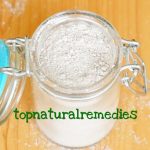What Can You Eat if You Are Diabetic
Diabetics usually know the struggle of having their meals restricted. But what does a diabetic diet actually include? Basically, all you will need to do is control your blood sugar. The diet shouldn’t be restrictive in any way, but it should be healthy and rich in nutrients. It is low in calories and fat, and it emphasizes on grains, vegetables, and fruits. Looking at this from another angle, a diabetes diet would be the best diet for everyone, with diabetes or not.

Contents
Why Would You Need a Diabetes Diet?
Before taking on a diabetes diet, you need to be aware of the type of diabetes you have. Usually, your doctor would recommend that you’d see a dietitian which can help you control your blood sugar (glucose).
That being said, when you consume a lot of fat and calories, your body will end up creating excessive rises in blood glucose. If not controlled, these high levels of blood glucose can lead to problems such as kidney, nerve and heart damage. You can control this by adopting healthy diets which can help keep your glucose levels in check.
Type 2 diabetes people can easily control their blood glucose levels by losing some weight. Once you’ve talked with your dietician, you will know the best way of losing weight for you.
What to Eat and What to Avoid
In order to promote a healthier lifestyle for people with diabetes, you first need to know what to avoid and what NOT to avoid. Here’s a list that can help you control your blood glucose.
- What to Eat
Get your nutrients from these foods and make the best out of your calorie count:
- Healthy Carbohydrates: Fruits, vegetables, and beans, these will help give a kick to your digestion, because they are broken down into blood glucose.
- Fish: Fish is heart-healthy and helps lower blood fats (triglycerides) since it is also low in fats.
- Foods Rich in Fiber: They decrease the risk of heart disease and can help you control blood sugar levels. These foods include nuts, fruits, vegetables, beans, etc.
- The “good” fats: Foods such as avocados, olives, walnuts, canola or pecans can help you lower your cholesterol levels. Add them moderately in your diet, since they are still fats.
- What to Avoid
Just as there are recommended foods, there are also foods that are not recommended at all. Be wary of meals that contain:
- Trans fats: Snacks or baked goods.
- Saturated fats: Dairy products that are high in fats, as well as animal products such as sausages, beef, and hot dogs.
- Sodium: No more than 2000 mg a day.
- Cholesterol: egg yolks, liver, and other organ meats.
By keeping these foods in mind, you can figure out what’s the best combination for you to keep your blood glucose at normal levels. Use the exchange system (by grouping foods into categories before you eat), count your carbohydrates and use the glycemic index to select your foods. Keep in mind that a daily meal plan should be made according to your weight and your level of physical activity.




Karen Stovell, I saw that you asked this question earlier today.
I was picking with Keith about being stressed lol. I’m still tired went to bed at 2 this morning, call u in a few I think I just got good news